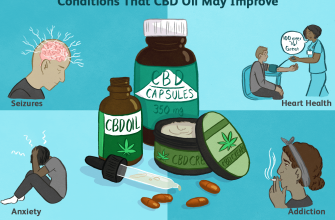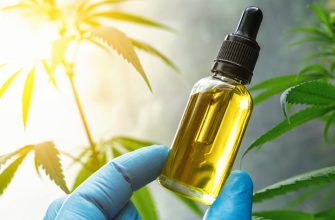CBD Oil for Seizures and Epilepsy: Benefits, Dosages and Side Effects
Research shows that CBD is a safe and effective treatment for seizure disorders. 1 in 10 patients do not experience seizures after taking CBD oil, and 70% experience a dramatic reduction in symptoms.
According to the Epilepsy Foundation, epilepsy is the fourth most common neurological disorder. CBD is reported to be one of the most effective treatment options for this condition – even for types of epilepsy that have proven difficult to treat with traditional medicine.
In this article, we will discuss how effective CBD is for treating epilepsy, what types of epilepsy CBD works best for, and how to get the right kind of CBD to use.
Benefits of CBD oil for epilepsy:
Relieves cramps
Protects neurons from damage
Regulates excess brain activity
Reduces brain inflammation
Promotes GABA activity in the brain
Despite all the research we have on the effects of CBD on epileptic conditions, we still do not know the exact mechanisms of action. Seizures are incredibly complex, and their causes are usually associated with dysfunction of several separate organs that collectively produce the symptoms of epi. Therefore, it is difficult to determine how much of this interaction is improved with CBD.
Here are the current theories based on results from clinical, in vivo, and in vitro studies.
1. Reduces epileptic convulsions.
Rodents induced with epilepsy were given various concentrations of CBD. The group receiving the highest dose (100mg/kg) showed a significant improvement in muscle contractions during seizures.
2. Regulates the electrical activity of the brain.
Seizures are characterized by excessive and chaotic electrical activity in the brain.
Electrical activity is largely regulated by vanilloid receptors (TRPV). CBD and CBDV have been shown to regulate these vanilloid receptors (TRPV1) in the brain. When, for whatever reason, TRPV1 is overactive, it causes epileptic seizures. CBD and CBDV have been found to control increased activity of this receptor in the brain, potentially leading to fewer seizures.
3. Protects brain cells.
CBD and many other cannabinoids in the cannabis plant have a broad, non-specific neuroprotective effect on the brain. Some of these neuroprotective effects are thought to be partially responsible for CBD’s potent antiepileptic activity.
CBD protects against other neurological conditions, including:
Multiple sclerosis
Alzheimer’s disease
spinal cord injury
prion disease
Parkinson’s disease
4. Suppresses brain inflammation.
As with most neurological disorders, inflammation is a major contributor to epilepsy. Much evidence suggests that CBD is an effective anti-inflammatory compound for the brain, potentially alleviating one of the important contributors to neurological disorders such as epilepsy.
CBD is effective because its fat-soluble nature allows it to efficiently pass through the blood-brain barrier. It also exerts anti-inflammatory effects through various inflammatory messengers and immune-regulating cells.
What dose of CBD oil?
Determining the correct dose of CBD for epilepsy is difficult and will likely require some trial and error.
Everyone reacts to CBD differently. Some people require high doses, others much lower. Without experience, you won’t know for sure what your ideal dose is.
In general, people with epilepsy require an above-average dosage to get the most benefit from the compound. This is why we recommend buying high potency CBD oil. If you buy a low potency CBD product and then realize you need a high dose to see any benefits, you will likely need to take the entire bottle for one dose. High performance oils last longer because they contain the same amount of CBD in less oil or capsules.
With that said, we recommend starting at a low dose and gradually building up until you reach a dose that provides the desired relief.
Tips for Getting the Most Out of CBD Supplements for Epilepsy:
1) Always look for high quality CBD products to avoid heavy metal or pesticide contamination, which can aggravate epilepsy.
2) For best results, use full spectrum extracts – studies show these extracts are more effective than isolated or purified CBD products.
3) Increase the dose gradually – start at a low dose and increase to a higher dose until symptoms improve.
4) Combine CBD with other antiepileptics and dietary changes such as a ketogenic diet, regular exercise, and psychotherapy when needed.
5) Take CBD regularly – effect
more pronounced after several weeks of regular use
What is epilepsy?
Epilepsy is a spectrum of disorders that includes the main symptom: unprovoked seizures. Other health problems may or may not be present. Everyone experiences epilepsy differently, and seizures can vary greatly in frequency and severity.
Some patients with epilepsy have seizures once or twice a year, while others may experience seizures almost continuously throughout the day.
Seizures can include full-body convulsions (grand mal), remain limited to one limb (Jacksonian seizures), or involve loss of consciousness (petit mal). Later we will talk more about the different types of seizures.
The seizure itself is the result of dysfunctional electrical activity in the brain, which can occur anywhere in the brain. This abnormal electrical activity may remain limited to the area where it started or may spread throughout the brain. In most cases, the latter is more severe.
People with epilepsy usually have the condition for the rest of their lives. However, it can come and go from year to year. Some people report not having a seizure for six years before having another seizure.
There are many different forms of epilepsy and many potential causes for each. Therefore, in many cases, it can be difficult for doctors to determine the exact cause of seizures.
Epilepsy symptoms:
temporary confusion
long look
uncontrollable twitches
Loss of consciousness
Sudden feeling of intense fear or anxiety
Memory losses
What causes seizures and epilepsy?
Seizures are the main symptoms of epilepsy. Although epilepsy is characterized by recurrent seizures, there are other causes, such as high fever or head trauma.
The brain is made up of billions of specialized cells called neurons. They are designed to send messages through the brain and body using electrical impulses. To do this effectively, the neurons in the brain must work together.
In the event of a seizure, large groups of neurons will simultaneously send messages (hypersynchrony), disrupting the normal functioning of the brain. It can cause changes in taste, vision, sound, smell, language, posture, memory, emotions, and consciousness.
Some seizures affect the entire brain; others only in certain regions. Individual side effects will be determined by the severity of the electrical activity and the degree of brain damage. In the end, not a single attack is repeated.
Causes of seizures may include:
brain injury
Structural abnormalities in the brain
High fever (children)
Injury
Stroke
brain infection
A brain tumor
Low blood sugar
Muscular disorders
There are different forms of seizures depending on the person and the type of epilepsy. Some people will experience one, two, or all three.
Three types of epilepsy
There are three different types of epilepsy.
The main differentiating factor in epilepsy is the types of seizures experienced, but there are other factors depending on the location of the electrical dysfunction in the brain and the underlying cause of the condition.
Over the past decade, a group called the International League Against Epilepsy (ILAE) has been working hard to standardize the terminology used to diagnose and describe epilepsy.
1. Focal onset
Epileptics with focal onset have abnormal electrical activity only in certain areas of the brain. They used to be called “partial seizures”.
There are four types of focal seizures:
Seizures with focal consciousness – the patient is aware of the seizure while it is taking place.
Seizures with impaired consciousness – the patient is not aware or loses consciousness during the seizure.
Focal motor seizures are movements such as rubbing hands or twitching during a seizure.
Focal non-motor seizures – These are not associated with muscle twitches or movements, but instead are associated with changes in thinking and emotions during the seizure. Heat or cold waves, rapid heart rate, or strong emotions are common.
2. Generalized beginning
Seizures with generalized onset are associated with abnormal electrical activity in both hemispheres of the brain, resulting in widespread side effects throughout the body.
There are two types of epilepsy with generalized onset: motor and non-motor.
Motor-onset states used to be called “grand mal” seizures – they still exist in some circles. They lead to full body seizures and an inability to control your body during seizures. They can last from a few seconds to several hours. CBD is helpful for these types of cramps due to its ability to relax muscle contractions throughout the body.
Non-motor seizures are commonly referred to as “absence” seizures. They include periods of staring into space or repetitive movements (eg.
3. Unknown beginning
As the name implies, any seizure whose source cannot be identified is called a seizure of unknown onset. These seizures are especially difficult to treat.
Epileptic syndromes
The new terminology outlined in ILAE does not change the characteristics of epileptic syndromes, of which there are quite a few.
The most common epileptic syndromes include:
Lennox-Gastaut Syndrome (LGS)
Drave’s syndrome
Juvenile myoclonic epilepsy (JME)
Benign rolandic epilepsy (BRE)
Absolute epilepsy in childhood (CAE)
Baby spasms (or West syndrome)
Epilepsy Risks
Epilepsy can compromise the safety of those affected. Driving, working, or even crossing the street can be risky. If the seizure starts suddenly, the victims are unlikely to be able to escape.
Common Treatment Options for Epilepsy
It is important to remember that epilepsy is a spectrum. Certain medications or other treatment options tend to work better for some forms of epilepsy than others. In some cases, the usual treatment does not work according to the requirements of the patient – usually these are people who start using CBD.
Medications for epilepsy include:
Epidolex (Cannabidiol)
Topamax (topiramate)
Lamictal (lamotrigine)
Klonopin (clonazepam)
Felbatol (felbamate)
Depakote (valproate)
Onfi (clobazam)
Diacomite (styripentol)
Medical marijuana for epilepsy
It is clear that marijuana is a useful supplement in various forms of epilepsy, including both generalized and focal, as well as in some epileptic syndromes.
Studies have shown that CBD is the active component of these effects. Interestingly, a recent meta-analysis found that while any form of CBD offered benefits, a full-spectrum CBD extract containing a variety of other cannabinoids was more beneficial and had fewer side effects overall.
For this reason, we recommend using a quality full spectrum product instead of pharmaceutical versions like Sativex or Epidolex, and CBD products made from 99.9% pure CBD isolates.
It is likely that the other cannabinoids in full spectrum extracts, along with terpenes and various other phytochemicals, work synergistically to provide related benefits.
History of Charlotte Figi
Charlotte Figi is an American girl with a severe case of Dravet Syndrome who forever changed the way we treat epilepsy.
When Charlotte was only six years old, her parents signed a “do not resuscitate” order for their little girl. This meant that in the event of an emergency when Charlotte stopped breathing or her heart stopped beating, medical professionals could not intervene and save her life.
Her symptoms were very severe – she often had hundreds of seizures every week. She could barely speak and her quality of life was at an all-time low.
Even after Figi tried many drugs, their daughter’s condition barely improved.
It wasn’t until 2011 that Figi decided to try cannabis for his daughter – and it worked.
Here the number of seizures dropped from 1200 a month to about three, and the ones she had were much less severe. Now she can talk, play and live a life much closer to “normal”.
The media attention that followed this story skyrocketed and may have been the catalyst that led to the creation of the CBD market we are currently experiencing. This is because CBD was found to be the compound responsible for treating Charlotte’s condition. The researchers got together to test this in other types of epilepsy, as well as in other diseases.
Guidelines for using CBD for epilepsy
CBD is becoming one of the most common treatment options for epileptics. However, due to poor regulation, there are a number of low-quality products in the CBD market that contain contaminants such as heavy metals or pesticides that can damage neurons and potentially exacerbate epilepsy symptoms.
There are also many companies that sell oils with a certain amount of CBD listed on the bottle, but when tested by third parties, they are found to only contain a fraction of the amount advertised.
When it comes to using CBD for epilepsy, it’s very important that you only use high quality, pollutant-free, and high-potency products.
Also, using a meta-analysis, it was proved that the Full Spectrum extract, rich in CBD, other cannabinoids and terpenes, has the greatest effect on epileptic conditions.
For this reason, we recommend specifically looking for a product with a CBD content of at least 50mg per ml that is made from certified organic hemp and has published results.
third party tests.
How to get a prescription for medical cannabis and CBD (Not for Russia)
Although each country has its own regulations regarding the use of medical marijuana, most countries with a medical program prescribe it for epilepsy.
The National Institute for Health and Clinical Excellence is working on official guidelines for prescribing medical cannabis.
The treatment of epilepsy is expected to be one of the main areas of this work, which is expected to be completed at the end of 2023.
If your country (or state) does not have a medical marijuana program, low-THC hemp extracts are a great alternative. In most countries, they are classified as food additives and do not have a psychoactive effect.
Finding the Right CBD Supplements for Epilepsy
There are so many different cannabis companies selling CBD oils, capsules, and preparations that it can be difficult to separate the good from the bad.
As a general guide, always pay attention to the following:
-Products containing full spectrum extracts
-Activity not less than 50mg per ml
-Posted products with third-party lab tests
-Products from certified organic hemp
– Extracts with low THC content (less than 0.3%)
1. CBD oils for epilepsy
CBD oils are the most popular form of CBD because they make dosing easy, they can be stored for long periods of time, they are one of the cheapest forms of CBD, and they are highly bioavailable.
2. CBD capsules for epilepsy
CBD capsules are another great option for people who want an easy way to get their dose without having to measure or sample CBD oil. However, capsules are on average slightly more expensive than oils.
3. CBD Edibles for Epilepsy
Edible CBD products are also available but are not recommended for daily CBD supplementation due to high sugar content and dosage inconsistencies. They are great for casual use to make CBD use more interesting and flavorful, but not ideal for everyday use.
4. CBD Vape Oils & E-Liquids for Epilepsy
CBD vape oils and vape pens are also an option, and many people with epilepsy choose to use this method to get their dose of CBD. The benefit of vape oils is that the CBD enters the bloodstream almost immediately, offering fast symptom relief.
If vaping doesn’t irritate your lungs, or you don’t feel like it at all, keep some vape oil on hand to quickly resolve a flare-up without waiting for the oils or capsules to be absorbed through your digestive tract.
CBD and epilepsy: what the research says
Cannabidiol (CBD) is one of over 66 different cannabinoids found in the cannabis plant.
There are two main cannabinoids in the cannabis plant, which account for more than half of the total cannabinoid content. CBD is not psychoactive (meaning you won’t feel high). It is also the main ingredient responsible for the anti-epileptic effect of the cannabis plant.
The pharmaceutical CBD drug – Epidolex (cannabidiol) – was approved in 2018 for the treatment of Lennox-Gastaut Syndrome (LGS) and Dravet Syndrome, two forms of epilepsy notoriously resistant to treatment.
A recent meta-analysis of 670 people with various forms of epilepsy found that 71% of people who took CBD-rich full-spectrum extracts experienced a reduction in seizure frequency.
Approximately 40% of people in this study experienced a halving of seizure frequency, and a quarter experienced an incredible 70% reduction in episodes.
Surprisingly, at the end of the study, 10% of the group did not have seizures.
CBD works – there is no doubt about it. Now the most difficult thing is to determine exactly how it works.
We are still figuring out exactly how CBD is useful for treating epilepsy and seizures. Even GW Pharmaceuticals admits on its website that the mechanism of action is unclear. GW Pharmaceuticals is the creator of Sativex, a new cannabinoid-based pharmaceutical that has been making a lot of noise lately as a revolutionary new treatment for epilepsy.
Final verdict: Can CBD help with epilepsy and seizures?
CBD is perhaps one of the most exciting new treatment options for epilepsy, including epileptic syndromes such as Dravet’s syndrome, which are problematic treatment-resistant.
To get the most out of CBD supplements for epilepsy, a high quality, full spectrum extract should be used. It is also recommended to select the high potency option because in most cases high doses are needed to obtain the same level of benefit reported in the scientific literature.
Check out some of our recent reviews to check out the company and its product before you buy. Remember to only buy products that are made from certified organic hemp and have been 3rd party tested for purity and potency.





